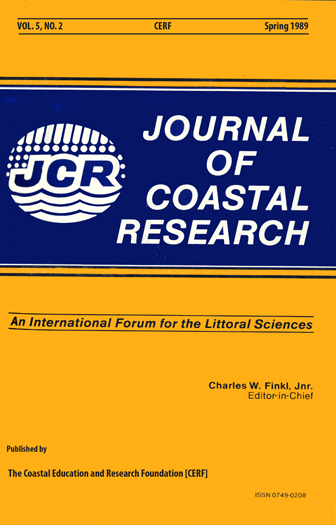The Outer Banks of North Carolina: Budget of Sediment and Inlet Dynamics Along a Migrating Barrier System
Keywords:
Barrier island, barrier transgression, budget of sediment, coastal processes, divergence of the drift, equilibrium beach profile, inlet dynamics, littoral cell, longshore transport, Outer Banks, sea-level rise, shoreline model, wave energy-fluxAbstract
The Outer Banks are barrier islands separating Pamlico, Albemarle and Currituck Sounds from the Atlantic Ocean. These barriers are transgressing landward, with average rates of shoreline recession of 1.4 m/yr between False Cape and Cape Hatteras. Oregon Inlet, 63 km north of Cape Hatteras, is the only opening in the nearly 200 km between Cape Henry and Cape Hatteras which bounds the Hatteras Littoral Cell. Oregon Inlet is migrating south at an average Tate of 23 m/yr and landward at a rate of 5 m/yr. The net southerly longshore transport of sand in the vicinity of Oregon Inlet is between one-half and one million m3/yr. Oregon Inlet is the most dynamic physical feature within the Hatteras Littoral Cell. The combination of waves and tidal currents deposit ebb-tide bars offshore of the entrance and form extensive tidal islands, bars and shoals in Pamlico Sound. These deposits lag behind as the inlet migrates. The offshore deposits are gradually returned to the beach by waves and reincorporated into the littoral drift system. The flood-tide inlet deposits in the sound are eventually reincorporated into the landward migrating barrier as the inlet moves to the south. The integrity of the landward side of the transgressing barrier is maintained by washover deposits, windblown sand deposits, and inlet deposits. Averaged over the 160 km from False Cape to Cape Hatteras, sea-level rise accounts for 21% of the measured shoreline recession of 1.4 m/yr. Analysis of the budget of sediment indicates that the remaining erosion of 1.1 m/yr is apportioned between overwash processes (39%), longshore transport out of the cell (22%), windblown sand transport (18%), inlet deposits (10%), and removal by dredging at Oregon Inlet (11%). This analysis indicates that the barrier system moves as a whole, so that the sediment balance is relative to the moving shoreline (Lagrangian grid). Application of a continuity model to the budget suggests that, in places, the barrier system is supplied with sand from the shelf.


